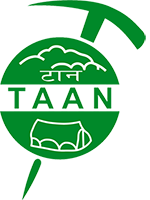
Annapurna Base Camp Trek Difficulty

Annapurna Base Camp Trek Difficulty
swotah travel
1147
25, 04 2024
The Annapurna base camp trek is a blissful journey that takes you to the lap of majestic Mt. Annapurna I. Annapurna I has an altitude of 8091 m / 26545 ft and is the 10th highest mountain in the world. The base camp itself is situated at an elevation of 4,130 meters (13,550 feet) within the Annapurna Conservation Area. This area, the largest protected region in Nepal, was established in 1985 and spans an impressive 1,629 square kilometres.
The trek is well known for the mesmerising view of the snow-capped mountains like Mt. Dhaulagiri (8167 m / 26795 ft), Mt.Hiunchuli (6441 m/ 21132 ft), Mt.Machhapuchre (6993 m / 22943 ft), etc, the natural hot springs, vivid landscapes, lush forests, and the colourful lifestyle of the Gurung and Magars. The classic route of this trek goes on full circle by starting and ending at Nayapul. Some of the other popular starting landmarks of the Annapurna Base Camp trek are Jhinu Danda, Chhomrong, and Ghandruk, all these routes retrace back to the beginning point themselves.

How difficult is the Annapurna Base Camp Trek?
The Annapurna Base Camp trek is graded as moderately difficult; however, numerous factors determine its difficulty level for you. Some of them are the duration of the trek, previous trekking experience you have, your physical activeness and endurance, the season you trek in, more or less the route one takes, etc.
There is no technical climbing or special skills required for the trek, but you must walk at least 5 to 6 hours a day through rugged paths and stone stairs.
Let's examine the main factors that affect the difficulty of the Annapurna Base Camp trek.
-
Previous trekking experience
Your previous trekking experiences are truly the key to knowing how difficult the Annapurna Base Camp trek is for you. If you have a record of indulging in treks and have completed a few ones before, then the Annapurna Base Camp trek is just a piece of cake for you. But if you do not have the habit of treks and hikes, it gets a little hard to get the hang of it. For those new to trekking, you should go on small hikes and increase your physical endurance and stamina by doing all sorts of physical exercise for about a month before the actual trek. This helps your body adapt well to new environments and allows you to walk long distances without many issues.

-
Altitude
The problems with adjusting to increasing altitude are not new for Himalayas trekking. The minimum elevation of the Annapurna Base Camp trek is 1070 m / 3510 ft at the starting point (Nayapul), if you start trekking from Kathmandu, it is 1300 m /4,265 ft. Elevation gradually increases and reaches the maximum altitude of 4130 m / 13550 ft at the base camp.
As one moves above the 2500 m 8202.1 ft, there are going to be mild symptoms of altitude sickness like nausea, headache, fatigue, dizziness, etc. As you keep gaining altitude, the acute mountain sickness gets severe. It shows more dangerous (sometimes fatal) effects like HAPE (High Altitude Pulmonary Edema), HACE (High Altitude Cerebral Edema), and extreme difficulty in breathing due to lack of oxygen. In order to stay safe from altitude sickness, it is important to acclimatise properly, stay hydrated, and pay attention to what you eat.

-
Season for the Annapurna Base Camp trek
The season you pick for the trek plays an important role in determining its difficulty level. It is better to opt for the Spring season or the Autumn/Fall season to reduce the difficulty of the trek. The average maximum temperature and minimum temperature during the Spring season are 8 degrees Celsius / 46.4 degrees Fahrenheit and -7 degrees Celsius / 19.4 degrees Fahrenheit, respectively. Similarly, during the autumn season, the average temperature ranges from 20 / degrees Celsius / 68 degrees Fahrenheit to -10 degrees Celsius / 14 degrees Fahrenheit. These two seasons are neither too hot nor too cold, which makes it perfect for the Annapurna Base Camp trek.
Deciding to trek during the winter season and summer/rainy season, however, increases the difficulty of the trek. In winter, the temperature is cruelly cold, ranging from 9 degrees Celsius /48.2 degrees Fahrenheit to -20 degrees Celsius / -4 degrees Fahrenheit. Due to extreme cold, there is a very high possibility of encountering snow storms and avalanches and getting first bites. Summer experiences heavy and continuous rainfall, making trekking harder than it already is. The average temperature in the Summer season is 3 degrees Celsius / 37.4 degrees Fahrenheit to 19 degrees Celsius /66.2 degrees Fahrenheit. At lower altitudes, the summer is scorching hot, and it gets hard to trek continuously for 6 to 7 hours a day.

-
Choosing the trail for the Annapurna Base Camp trek
As mentioned above, there are few trails known for the Annapurna Base Camp trek. The route you take and the duration of the trek are affected simultaneously. The duration of the Nayapul route is 7 days to 12 days long, the Ghandruk route is 7 days to 9 days, and the one from Jhinu Danda is 7 days to 10 days long.
Because the days are shorter, it is better to take other routes than the classic Nayapul route. However, it is highly advised not to take the alternative routes unless you are trekking with a group with at least one person who is familiar with the paths and locals around. It is difficult to find good teahouses or lodges in the alternative trails. These routes can be dangerous and have high risks of getting lost. Considering physical challenges, there are not many differences between the trails, but when talking about security, there sure are pros and cons.

Is the Annapurna Base Camp trek beginner-friendly?
Yes, the trek to Annapurna’s base camp is actually beginner-friendly. Newbies can go for this trek with few preparations like improving themselves physically, learning about acclimatisation, doing research on the trek, short hikes, hiring certified guides to accompany them, knowing all the first aids required, being aware of the possible natural hazards and eating high energy food. As long as you do these things, Annapurna Base Camp can surely be your first embarkment to the Himalayas.

What can you do to make the Annapurna Base camp trek less difficult?
-
Pack clothes and trekking equipment according to the weather conditions.
-
Always carry a protein-filled snack with you for instant energy gain.
-
Stay hydrated at all times.
-
Have navigating devices with you to avoid getting lost in the trail.
-
Before hiring a guide, make sure to do their background check, look for the reviews online, and ask to see all the authorised certificates.
-
It is better to follow the classic routes, for alternative routes often do not have boards for directions, good teahouse facilities, and are a bit more risky.
-
Do not eat very greasy food, and avoid smoking and drinking while on the trek.
-
Have travel insurance so that if anything bad happens, you are covered for the loss.
-
Never rush to complete the trek. Such behaviour in high altitudes can be extremely fatal. Gaining elevation very quickly is not good for your body. Therefore, maintain a steady pace while trekking to the Annapurna Base Camp.
-
Always have a first aid kit with you, and make sure you have over-the-counter medicines for altitude sickness, such as acetazolamide, dexamethasone, ibuprofen, etc.
-
To avoid altitude sickness, make sure to acclimatise enough. If you do feel the symptoms of acute mountain sickness, then pause the trek and rest up until you feel completely fine, and then only resume walking further ahead.
-
Always check the weather forecast on the morning of the trek to avoid the possibility of being caught in bad weather conditions and natural calamities.

Can you do the Annapurna Base Camp trek without a guide?
No, you cannot trek to Annapurna Base Camp without an experienced guide. As of April 1st, 2023, the Tourism Board of Nepal has officially prohibited solo treks. It's crucial to ensure that your guide is licensed and registered with the government.
Without a legit trek guide, one cannot even get the necessary permits for the Anapurna Base Camp trek. While this might seem a little unreasonable, the government states the rule of mandatory guides is for the safety of the trekkers. Unfortunately, there have been cases of trekkers getting lost in the trails, scammed, caught in natural calamities, etc. Having a person who can help you out in these situations is the main intent of the rule. More or less, this rule aims to create more employment opportunities for the locals, leading to a better economic status for the country in the long run.
Note: This rule applies only to foreign trekkers. Nepali trekkers do not need to be compelled to hire a guide.
Also Read: 10 permit-free trekking destinations for solo trekkers in Nepal

NEWSLETTER SIGNUP
Sign up to receive our trip ideas and travel offers!
Get updates and Exclusive Offers up to 20% Discount








